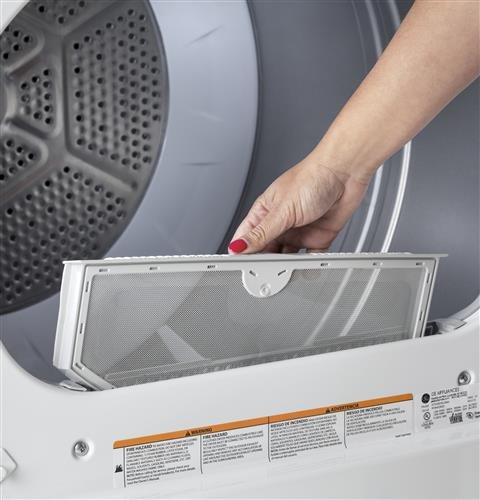
You might be thinking, “Well, it’s just one little error code. How big of a deal could it be if I leave it be?” Here’s the deal: ignoring an error like this can lead to more significant problems down the line. Much like ignoring a blinking warning light on your car’s dashboard, dismissing the “OE” error can result in more severe issues that could ultimately end up costing you more in repairs or even require you to replace the dryer altogether. So, let’s take a closer look at what causes this error and why it’s crucial to tackle it head-on.
Understanding the “OE” Error Code on Your Dryer
When your GE dryer displays the “OE” error code, it’s essentially alerting you to an issue with the dryer’s air exhaust system. Think of your dryer like a little factory assembly line. If there’s a jam in the line, the whole process halts. In this case, the “OE” error is often indicative of a blocked or restricted airflow, preventing the dryer from functioning optimally. This blockage might be due to a clogged lint filter, a kinked vent hose, or even residue buildup within the ventilation system that impedes the airflow.
Imagine your dryer working hard to expel hot air and moisture, only for those elements to be trapped and unable to escape. This condition creates inefficiency, causing the dryer to overheat or fail to dry clothes effectively. Addressing this issue promptly not only keeps your dryer functioning well but also helps avoid potential hazards, such as overheating, which could lead to fires.
It’s important to start by checking the lint filter and the vent hose for any visible blockages. Gently remove any lint or debris you find. For the more adventurous DIY enthusiast, inspecting the entire ventilation system to ensure it’s free from obstructions is a good step. Remember, the dryer relies on clear airways to work its magic, so maintaining them is key to avoiding that pesky error.
Why Ignoring “OE” Could Spell Trouble
Ignoring the “OE” error on your GE dryer might seem tempting, especially if the appliance still seems to be functioning more or less normally. But here’s why you shouldn’t turn a blind eye. Letting the error persist can lead to long-term damage not only to your dryer but possibly to your clothes as well. Without proper ventilation, the dryer may experience overheating, which not only affects its components but can also pose a safety risk in your home.
Overheating can cause wear and tear on the dryer’s internal parts, leading to costly repairs. If the dryer continues to operate under these conditions, it may eventually stop working altogether, leaving you with a hefty repair bill or the need for a replacement. Moreover, your clothes might not dry properly, leading to damp, musty-smelling laundry—a problem no fabric softener can mask.
Additionally, consistently using a dryer with restricted airflow can result in higher utility bills. The machine will need to work harder and longer to achieve the same drying results, consuming more energy in the process. Addressing the “OE” error promptly ensures you’re being energy efficient, which is not only better for the environment but also easier on your wallet.
Steps to Fix the “OE” Error
Fixing the “OE” error doesn’t have to be complicated, and you certainly don’t always need to call in a professional right away. Start with the basics by cleaning the lint filter after every load. It might seem like a small task, but it makes a considerable difference in your dryer’s efficiency. Next, detach and inspect the vent hose. Give it a good clean and make sure there are no kinks that could be restricting airflow.
For those who are comfortable with a bit more hands-on DIY, consider checking the external vent opening for blockages. Sometimes, birds or small debris can block the exit, causing airflow issues. If you find the external vent requires cleaning, doing so can make a substantial impact on drying performance.
Don’t forget to regularly schedule maintenance checks for your dryer. Some issues might be internal and require professional assessment. By keeping the dryer clean and checking it periodically, you’ll extend its lifespan and maintain its performance. Taking these steps ensures you minimize the chances of encountering the “OE” error again, keeping your laundry routine on track.
Preventative Measures to Avoid Future Errors
To prevent the “OE” error from appearing in the future, it’s crucial to adopt some regular maintenance habits for your dryer. Think of it like oil changes for your car—routine care keeps everything running smoothly. Make it a habit to clean the lint trap after each drying cycle. Not only does this help prevent blockages, but it also improves drying efficiency and performance.
Consider performing a deeper clean of the dryer’s vent system every few months. This can help prevent lint buildup in hard-to-reach places. If you’re not comfortable doing this yourself, professional services are available. Hiring an expert to do a thorough cleaning can provide peace of mind that your dryer is in optimal condition.
Lastly, be mindful of the types of loads you’re drying. Overloading the dryer can contribute to inefficient drying and can strain the machine. Try to dry similar types of fabric together and avoid overstuffing the drum. Taking care of your GE dryer with these simple preventative steps ensures it remains a reliable part of your laundry routine, free from unexpected errors.
In conclusion, while the “OE” error on your GE dryer might seem like a small annoyance, it’s essential to address it promptly to keep your dryer functioning efficiently and safely. By understanding what the error means and taking proactive steps to prevent it, you can avoid costly repairs and maintain a hassle-free laundry experience.